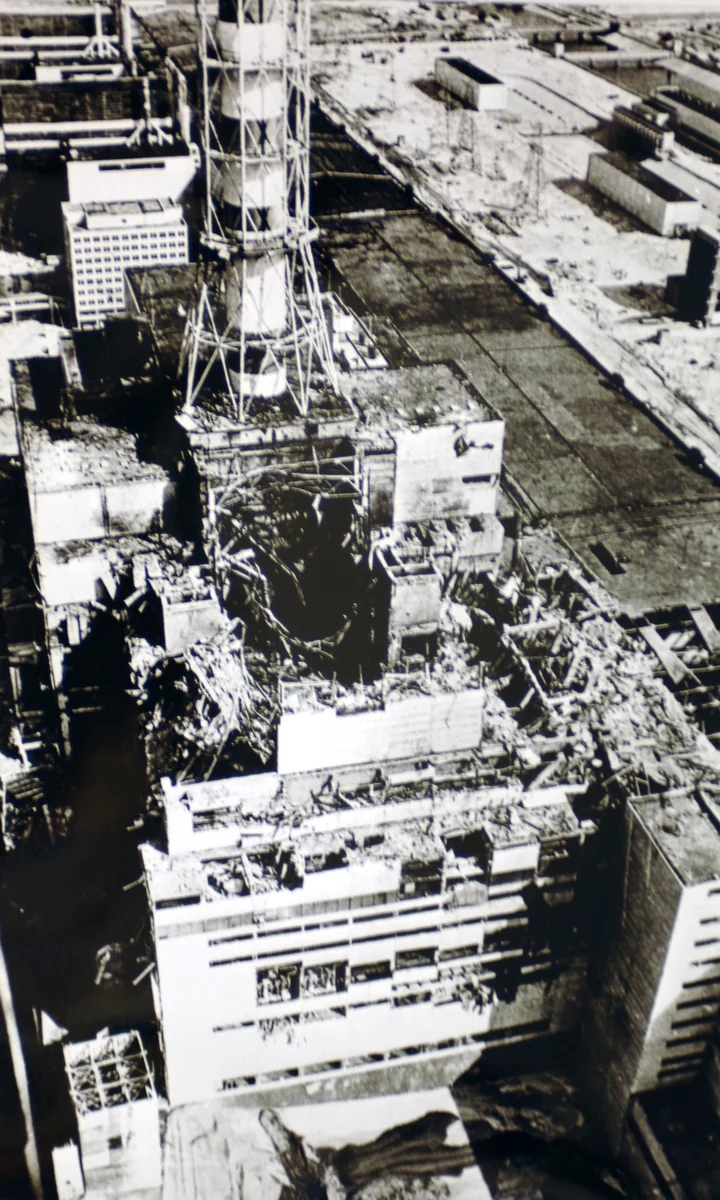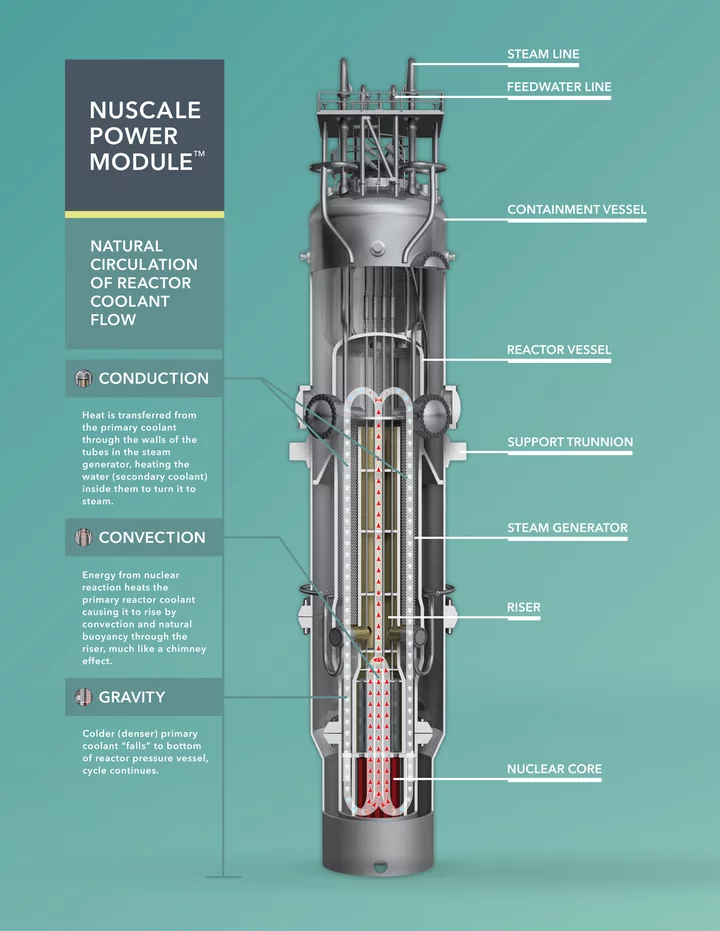A
commentator recently wrote, in response to something I’d
written about nuclear fission reactors, “There’s
no such thing as safe nuclear power.”
Which is true, but that’s
on a par with, “There’s
no such thing as safe anything”
— driving,
eating, sex, drugs, colonoscopies…All
have their risks. The question is, of course, “Compared
to what?”
While not 100% safe
— in
this life, nothing is
— nuclear
fission probably the safest form of power generation we’ve
got, certainly hundreds of times safer than coal, while contributing
a fraction of global-warming carbon dioxide that coal does. You don’t
have to be “pro”
or “anti”
nuke to take the alternatives into account when deciding what your
stance is going to be; just look at the numbers.
Currently, fossil fuels — coal, oil and gas — provide two-thirds of the world’s electric power needs. Of the rest, half comes from hydro power, with nuclear, solar and wind making up the balance. Nuclear accounts for about 10% of all electricity generation.
Climate Change
A few years ago, the IPCC (Intergovernmental Panel on Climate Change) compared the lifetime values of the carbon footprints of coal, gas, nuclear plants, taking into account initial construction and final demolition. Coal was the clear winner — 820 grams of CO2 per kilowatt-hour of electricity sent to the grid — with gas being the runner-up at 490. Hydro, solar and gas are way less, while nuclear power scored a mere 12 grams per kilowatt-hour. These are all median values, of course, and different groups come up with different numbers, but the very highest I’ve seen for nuclear comes from a Dutch anti-nuclear group: 117 grams per kWh, still a fraction of that for coal. (Thanks to Sabine Hossenfelder for providing links to these numbers.)
Safety
Coal sucks. That is, our lungs suck up pollution from fossil-fuel power plants (coal, oil and natural gas), causing, by a recent estimate nearly 9 million deaths per year — one in five of all deaths. Here’s a summary in the Guardian (not known for its pro-nuclear stance) if you don’t want to wade through the fine print.
Nuclear power is benign in comparison. The worst nuclear power accident, Chernobyl, in 1986, killed 40-50 people directly, and a hundred times that—maybe 5,000—from long-term cancer. Virtually all the deaths resulting from the 2011 Fukushima disaster resulted from the evacuation, mostly ill and old people whose continuous care was interrupted. Just one worker died several years after the accident from radiation-induced lung cancer. (Somewhere between 5,000 and 10,000 people died in the tsunami, which caused the Fukushima accident.)
IAEA Imagebank, CC BY-SA 2.0, via Wikimedia Commons
Other Pros and Cons
The generation of electrical power from hydro and solar sources is environmentally destructive by its very nature. Hydro — think of those four damn dams on the Klamath that (1) should never have been built in the first place and (2) are proving devilishly difficult to remove. And while solar has been getting cheaper and more ubiquitous in the US, it still accounts for less than 3% of the power we now use. (Wind = 9%, hydro = 6% for comparison.) Nuclear power plants, OTOH, have relatively small footprints.
Nuclear has solar and wind beat in providing on-demand power, not just when the sun shines or the wind blows.
Nuclear power plants are scary-expensive, each one costing several billion dollars to build, plus it takes decades from inception to actually producing power. And the cost of nuclear fuel — uranium 235 — is only going to increase as world supplies are depleted. Unlike solar and wind (I don’t even want to think about more dams for hydro plants), uranium, along with coal and natural gas, is non-renewable.
And then there’s the problem of dealing with used radioactive fuel bundles. Right now we have six hugely expensive (both to build, to transport and to fill) dry casks sitting on the PG&E Buhne Point site. Which are designed to be transported (in the unlikely event engineers can’t stem the coastal erosion), but — with Yucca Mountain dead, to where??? I wrote about them here.
Alternative nuclear energy
Current proposals for a new generation of nuclear fission power plants incorporate passive fail-safe mechanisms: if they overheat, they automatically shut off without and human involvement. (That’s compared with some of the older designs: accidents waiting to happen. Or which did happen. For instance, the Russian RBMK “Generation II” reactor at Chernobyl that underwent an uncontrolled nuclear chain reaction — causing an explosion that released massive clouds of radioactivity across Europe — was known to be unstable at low power levels.)
NuScale, CC BY-SA 3.0, via Wikimedia Commons
Most of my own hopes for future electricity generation from nuclear fission lie with small modular units built in a factory and transported to the site where power is needed. I wrote about the most promising venture, at least in the US, five years ago under the cutesy header “Nuclear Batteries.” NuScale’s 65 foot high x 9 foot diameter light water reactor stems from a design that originated at Oregon State.
As I wrote then, “the module’s passive-safe design needs no external power to cool it down in an emergency…a bank of 12 could supply the needs of a million-plus population. Building identical units at a central manufacturing facility is inherently safer than in-situ construction of a conventional nuclear power station, while the cost of a single [60 megawatt] NuScale SMR [Small Modular Reactor] is estimated at about one-twentieth of that of a 1,000-megawatt [conventional] plant.” The plan was to have a 12 prototypes working by 2027, but Utah-based NuScale has since pushed that target date back by three years while adding 50% to the original $4 billion R&D cost estimate.
This is far too complicated a topic to be dealt with in a quick ‘n’ dirty summary. I encourage you to do your own research before jumping on the “no safe nuclear” bandwagon.


CLICK TO MANAGE